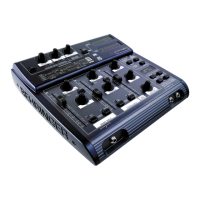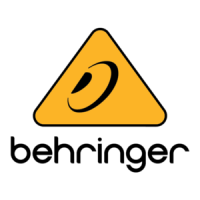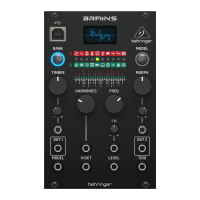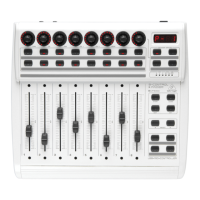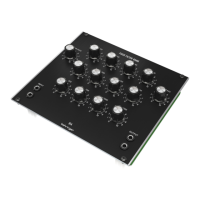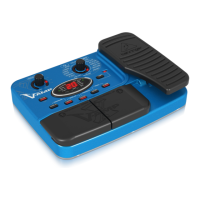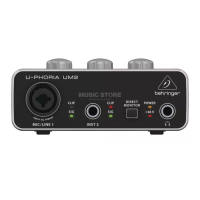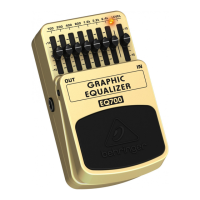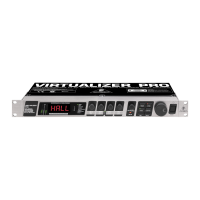13 B-CONTROL FADER BCF2000/ROTARY BCR2000 User Manual
Stand Alone-Mode S-3:
VOLUME
MUTE DEMO FILTER LEVEL
PROG TYPE COMBI PLAY POWER
PHONES
MIDI-Expander B
VOLUME
MUTE DEMO FILTER LEVEL
PROG TYPE COMBI PLAY POWER
PHONES
MIDI-Expander A
BCF/BCR2000
Parameter Feedback
Merge
to Computer
from Computer
USB
MIDI IN
MIDI OUT A
MIDI OUT B/
THRU
B-CONTROL
MIDI Data Send
MIDI-Expander A
MIDI Keyboard
MIDI-Expander B
MIDI IN OUT A OUT B/THRU
MIDI Keyboard
MIDI IN
MIDI IN
MIDI OUT
Fig. 4.8: Routing and use in stand-alone mode 3
In this mode, MIDI data from the BCF2000 / BCR2000 is mixed with the data
coming in at the MIDI input (merge function), but is exported exclusively on
output A. Only control data of the B-CONTROL is available at output B.
This way, you can control two MIDI devices from your B-Control, but only the
device connected at OUT A can additionally be played from the MIDI keyboard.
If you want to daisy-chain two B-CONTROLs to jointly control several MIDI
devices, you need to connect OUT A of the rst B-CONTROL to MIDI IN of the
second B-CONTROL. OUT A of the second B-CONTROL needs to be connected
to the MIDI input of the eects unit. If additional MIDI devices need to be
“talked to,” please connect the THRU port of one MIDI device to the IN port of the
next MIDI device. This way, with dierent MIDI channel assign ments, each MIDI
device can be controlled from each one of the B-CONTROLs.
If additional MIDI inputs are needed, then external MIDI merge boxes must be
used. For example, if your sound module only has one MIDI IN connector, and you
want to control if from several MIDI controllers and from a keyboard, you will
need a 2-in / 1-out merge box.
If additional MIDI outputs are required, you will need external thru boxes.
With more complex MIDI setups, thru boxes are preferred to using longer thru
chains to prevent data transmission problems.
If you don’t require the response function during software control, you can
connect as many BCF2000 / BCR2000s as you want per MIDI. The last B-CONTROL
in the chain is then connected to the MIDI IN input of your computer. This way,
you can control nearly as many channels of a software mixer as you wish.
However, keep in mind that all devices must share 16 MIDI channels.
Stand Alone Mode S-4:
MIDI-Expander
VOLUME
MUTE DEMO FILTER LEVEL
PROG TYPE COMBI PLAY POWER
PHONES
MIDI IN
MIDI IN
OUT A
MIDI OUT MIDI IN
OUT B/THRU
Software Sequencer
push
Software Mixer
move/
fade
turn
push
Software Synthesizer
move/
fade
turn
push
BCF/BCR2000
Parameter Feedback
to Computer
from Computer
USB
MIDI IN
MIDI OUT A
MIDI OUT B/
THRU
B-CONTROL
MIDI Data Send
Computer
MIDI-Expander
Fig. 4.9: Routing and use in stand-alone mode 4
The Stand Alone mode “S-4” is very similar to mode “S-2”, with the dierence
that the merge function is not available. This mode is ideally suited for
connecting to the MIDI interface of a computer without a USB connector.
The B-CONTROL routes the incoming data to the MIDI output B (the Thru function).
MIDI control commands are laid out at output A. This way, parameter feedback is
possible without the danger of creating a MIDI loop.
Connect the MIDI output on the MIDI interface of your computer to the MIDI
IN input on the B-CONTROL. Connect OUT A to the MIDI input on the interface.
An additional MIDI receiver can be connected to OUT B. An expansion using a
second B-CONTROL is also conceivable. To do that, connect the B output with
MIDI IN on the next MIDI receiver. To send MIDI commands from several units to
your PC, use an external MIDI merge box.
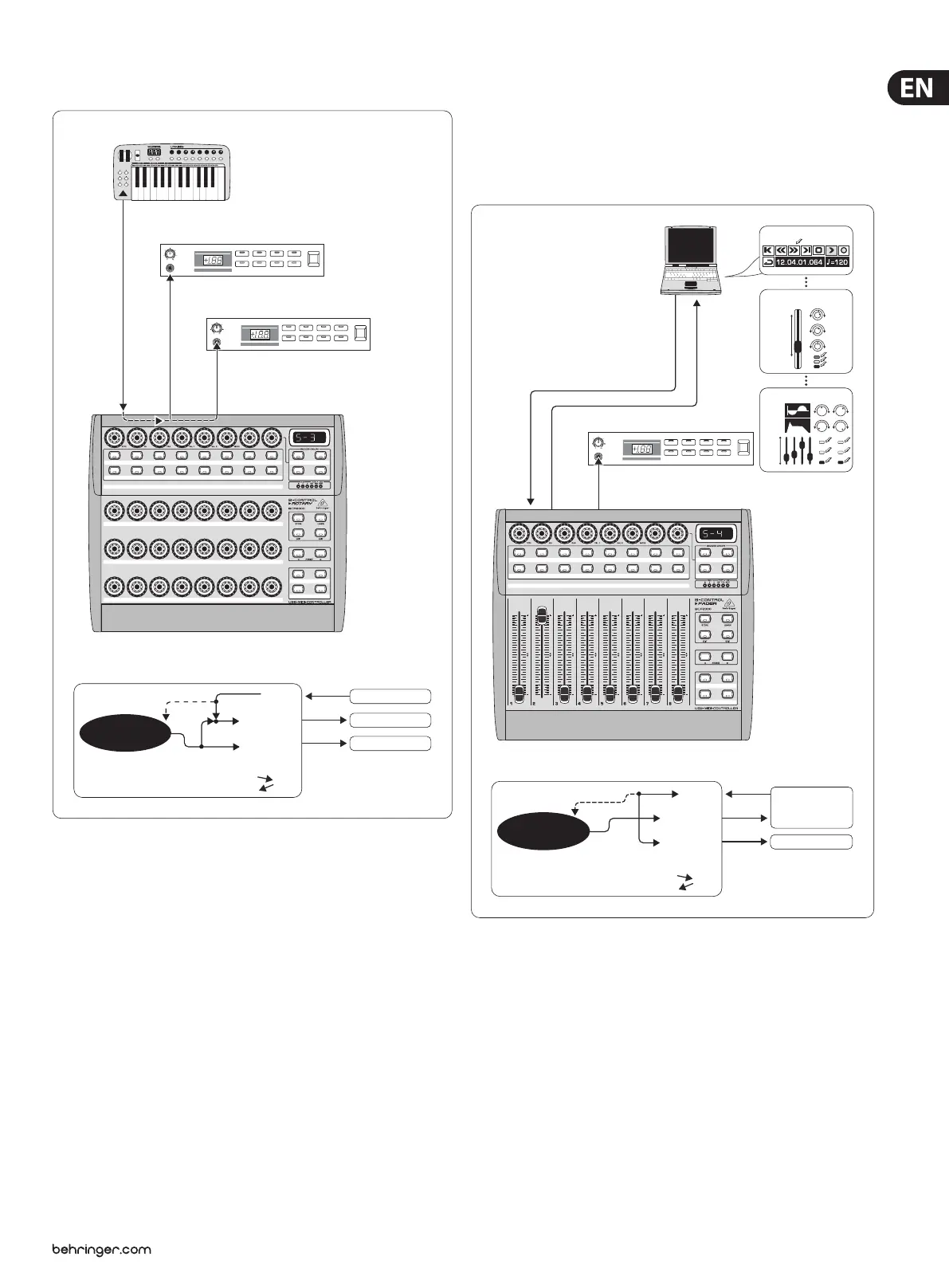